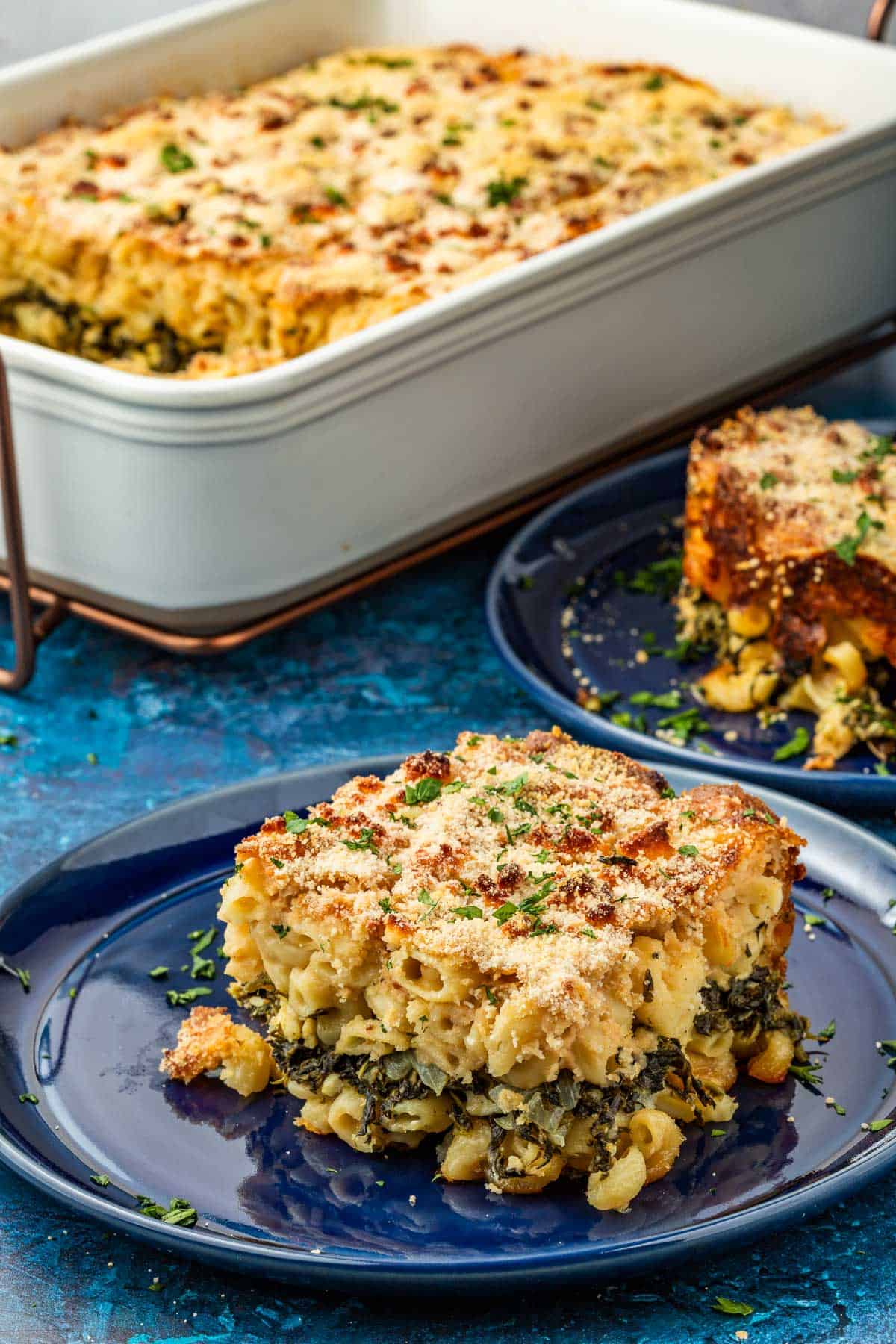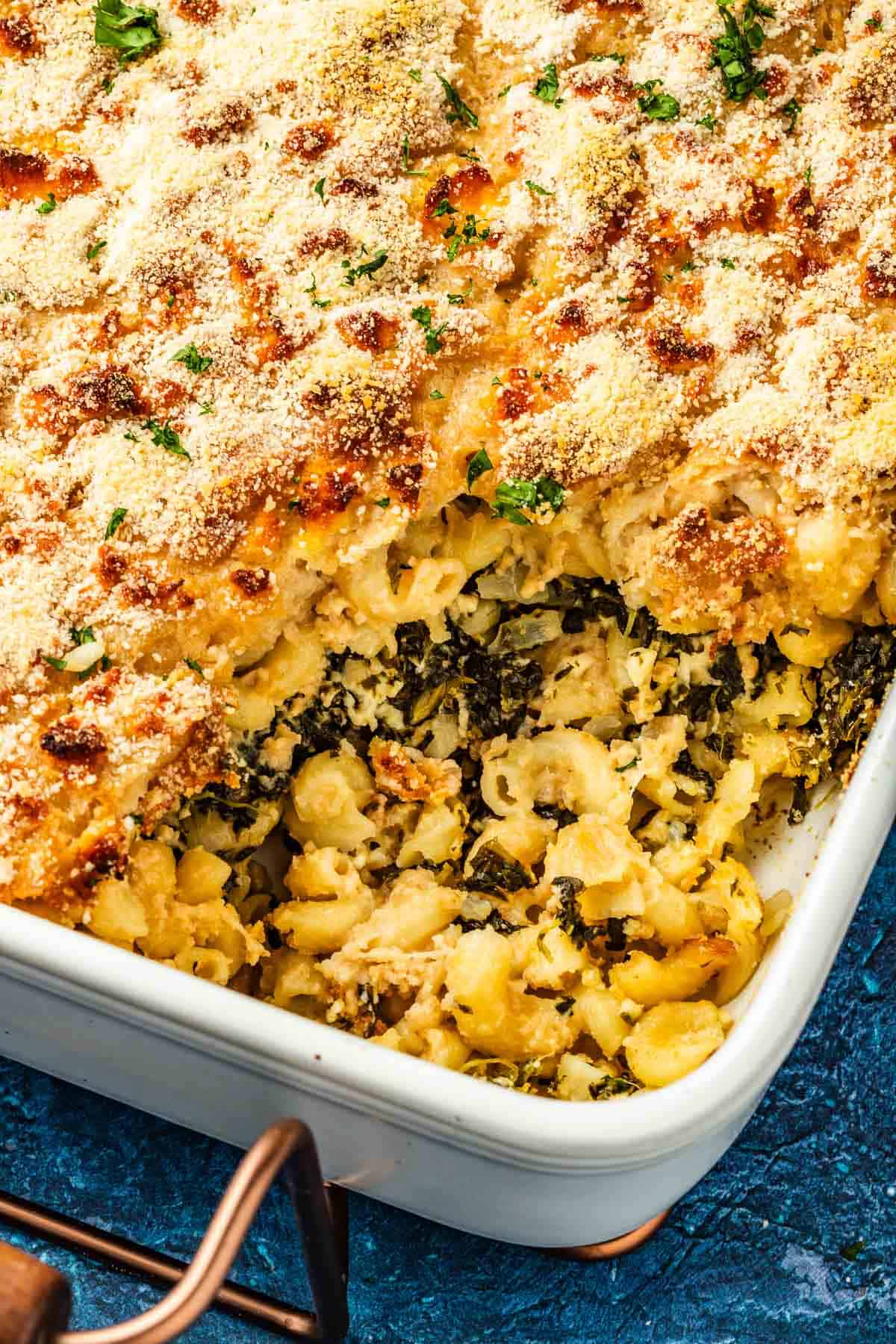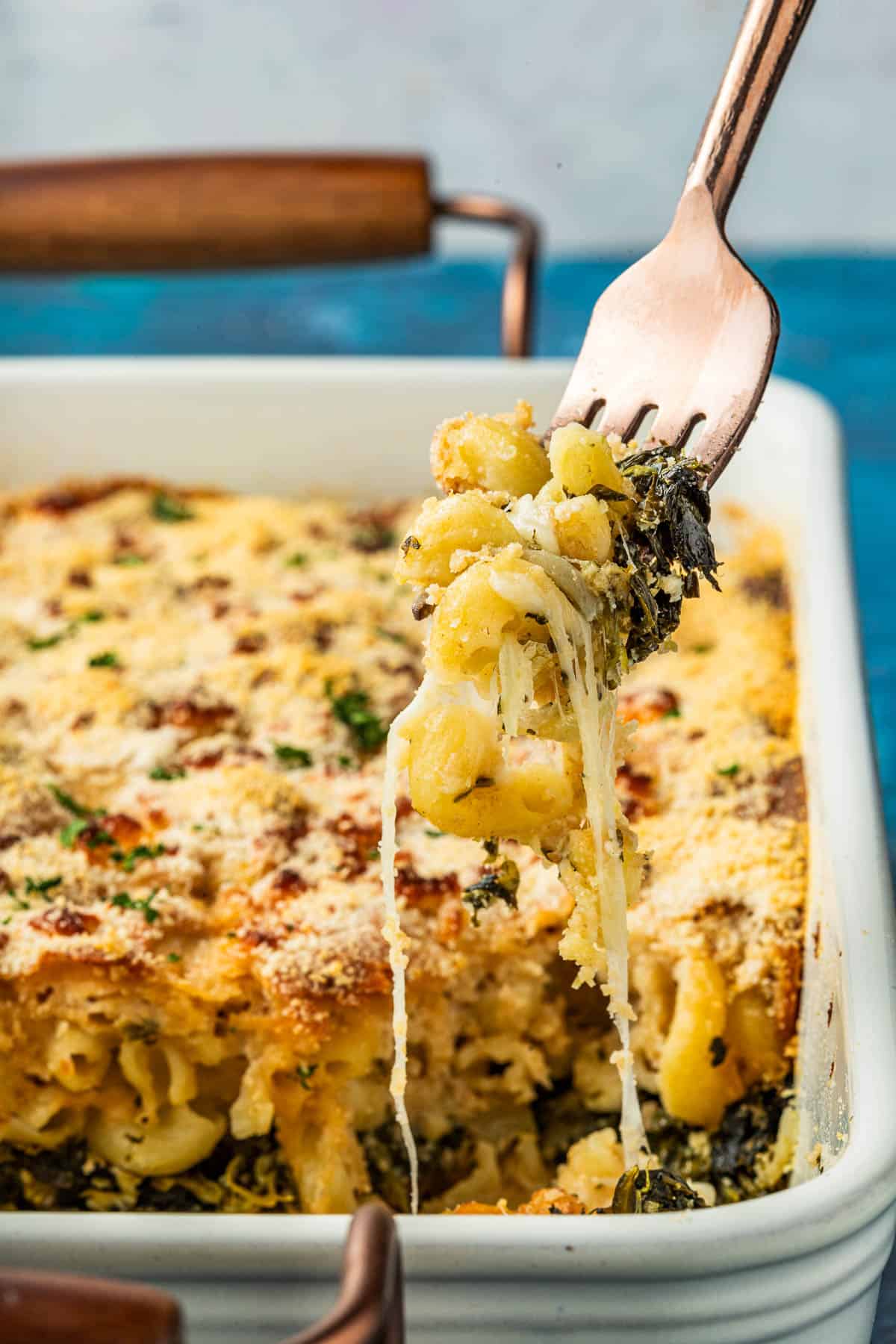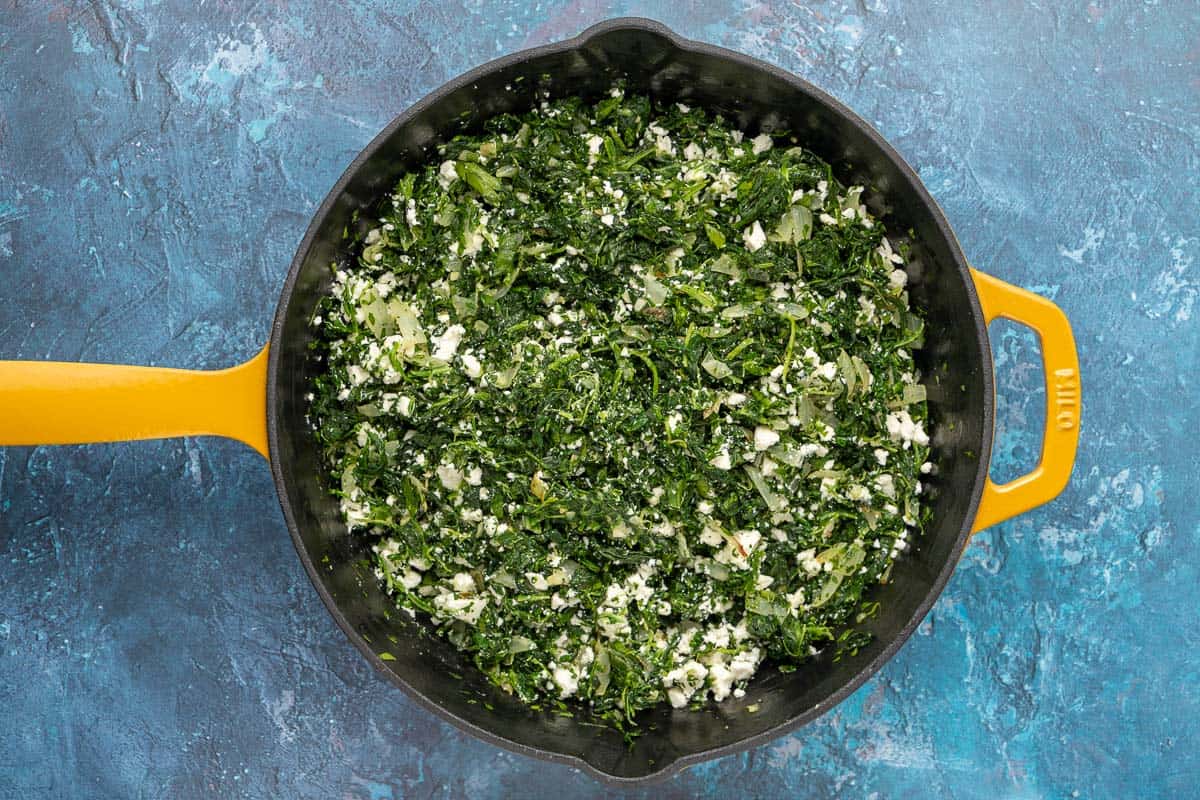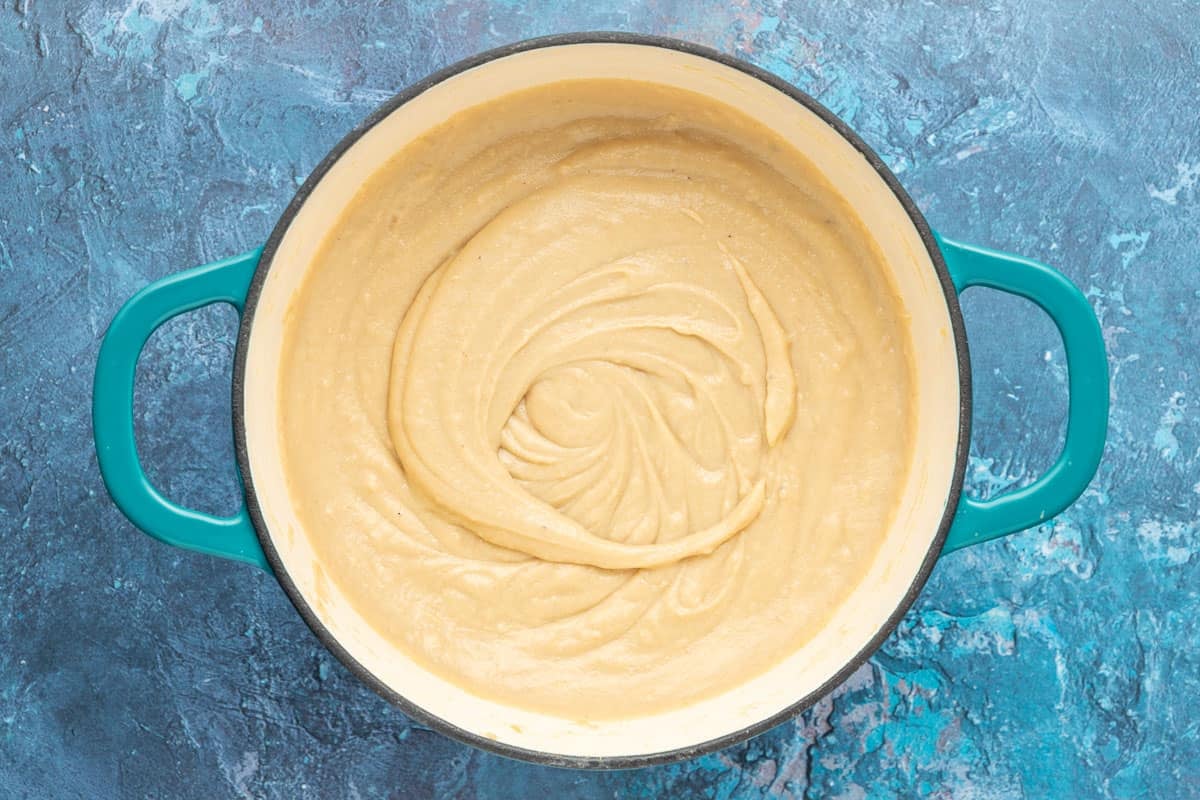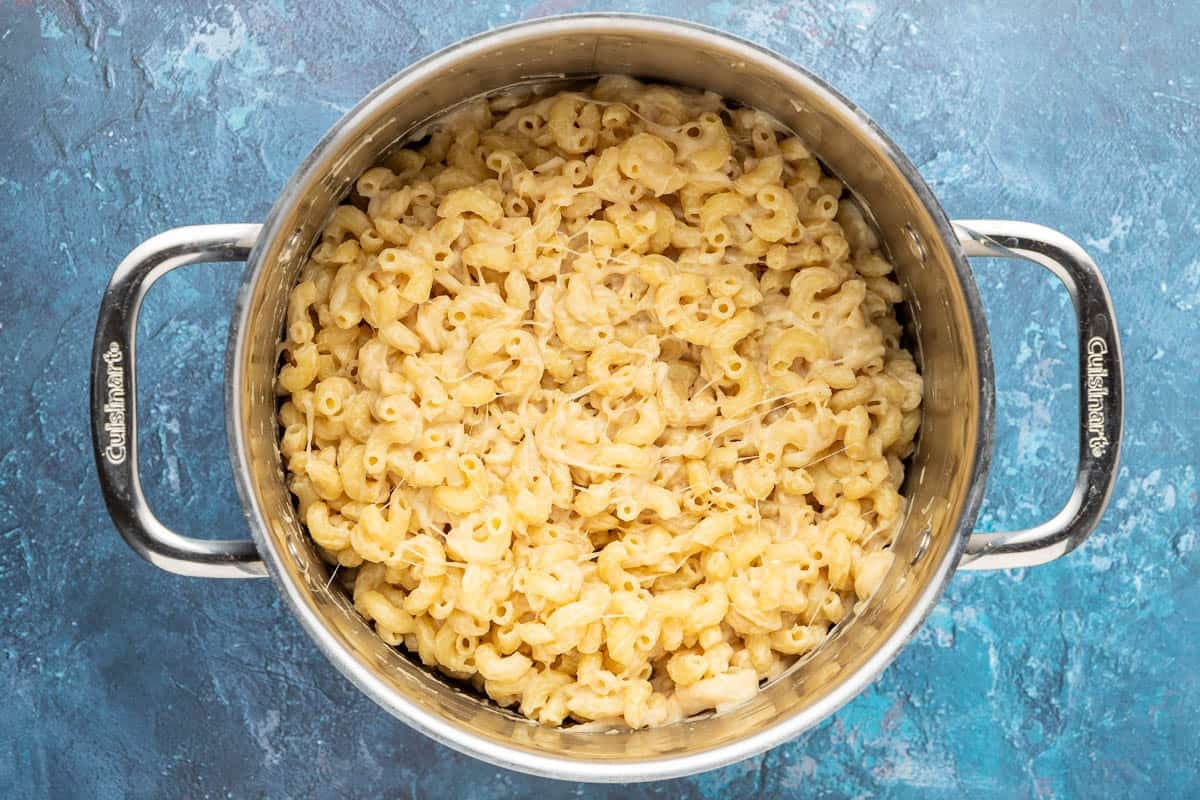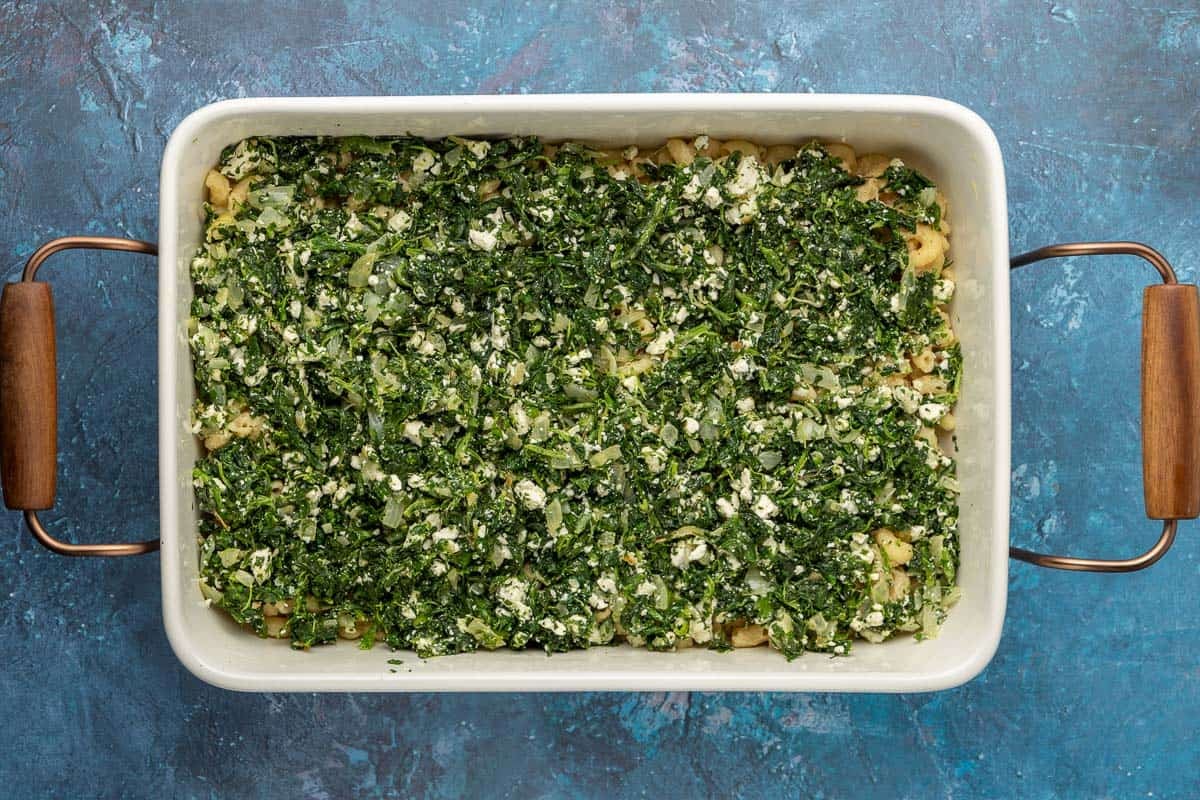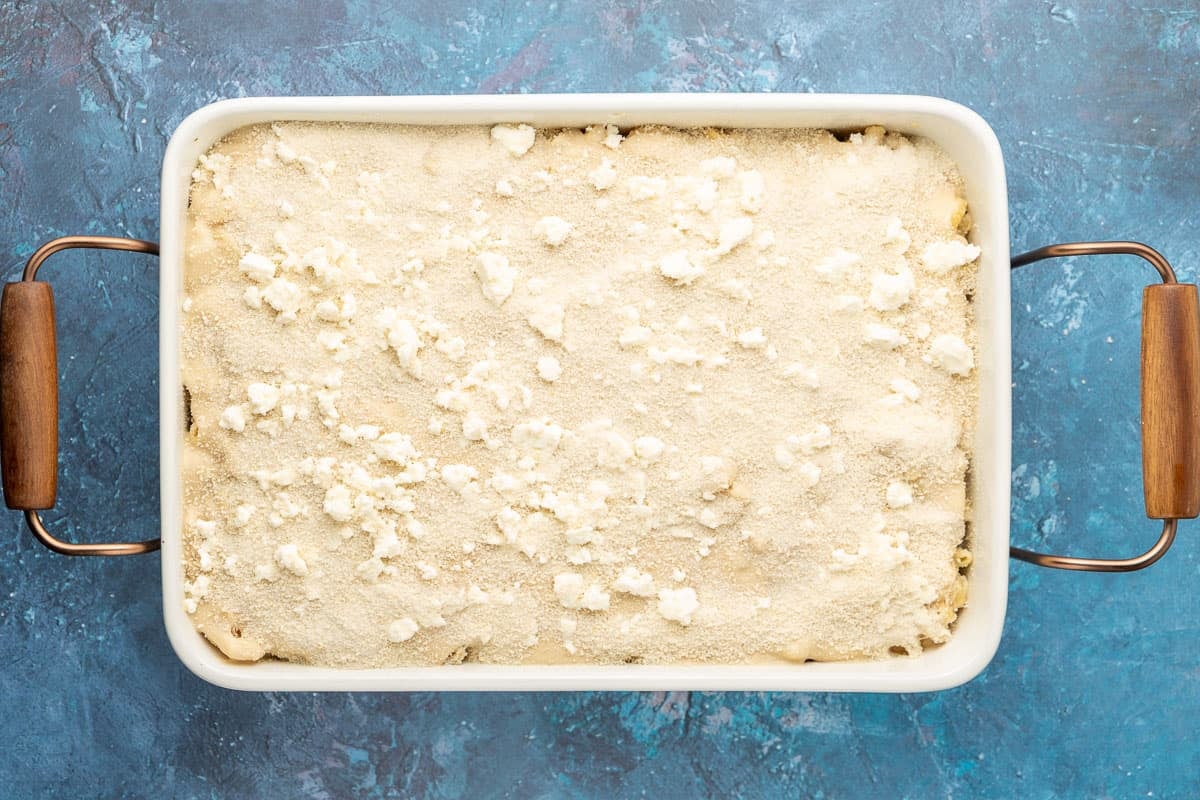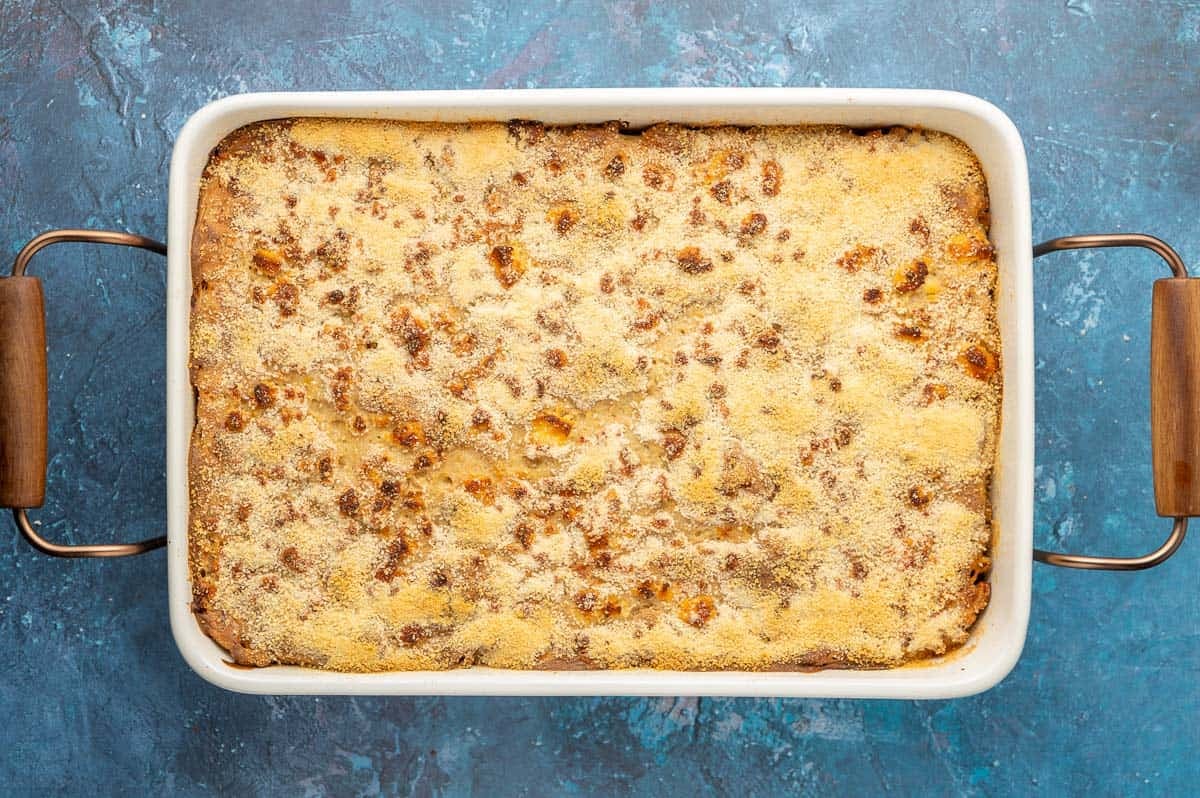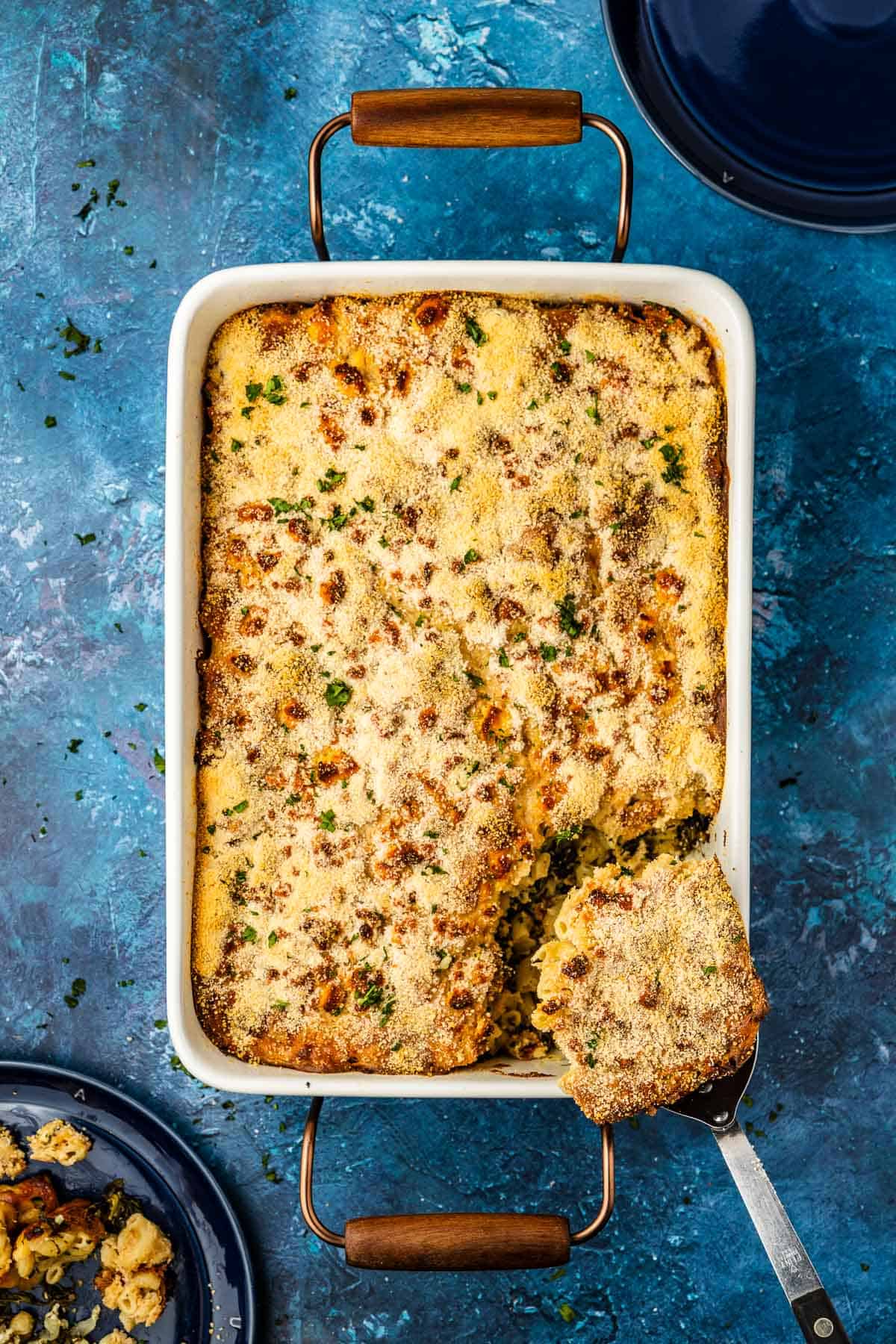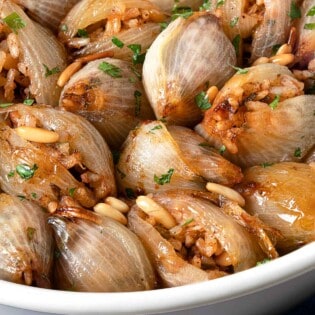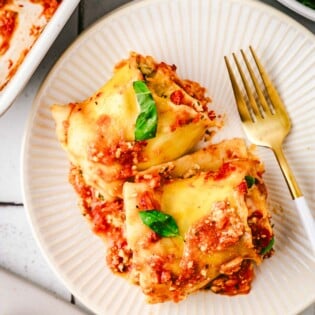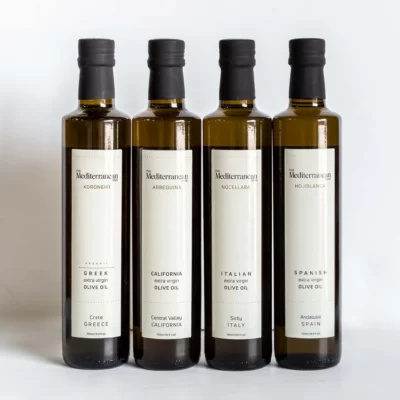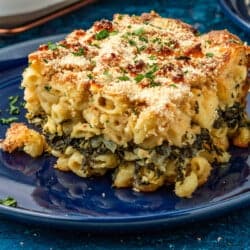When I was working on an egg muffin recipe for first cookbook inspired by the classic Greek savory feta and spinach pie Spanakopita, I started imagining everything I would like to “spanakopita-ify” and baked mac and cheese was at the top of the list! This comforting baked pasta casserole is a hybrid of two of my favorite Greek comfort foods: Spanakopita and Pastitsio, plus the velvety goodness of homemade mac and cheese from my adopted home in the southern United States. The result? A mash-up of comfort foods from totally different cultures: a velvety mac and cheese loaded with spinach and feta for that Mediterranean kick. It makes for a perfect marriage of the ultimate luxury and the wildest flavor party. Although it is not heavily melty, it’s a delicious baked pasta. And, with extra virgin olive oil replacing the butter and low-fat milk replacing the cream, it’s lighter than the incredibly rich original–more like the pasta version of Spanakorizo (Greek Spinach Rice). Make this baked mac and cheese recipe for a refreshing twist on the classic vegetarian main this holiday season, or simply to bake some extra comfort into your weeknight dinner routine.
Ingredients for Spanakopita Mac and Cheese
The ingredient list for this baked mac and cheese recipe may seem long, but it’s mostly filled with pantry ingredients you likely have on hand. You’ll need:
Pasta: Macaroni or elbow pasta is traditional, but you can use any small pasta of your choice. Seasonings: This dish is seasoned simply with kosher salt and black pepper to enhance the flavor and a touch of nutmeg to bring a warming and aromatic quality. Frozen spinach: A great way to pack in loads of spinach with little effort (just make sure it’s thawed and dried very well). If you’d like to substitute with fresh spinach, cook down about 2 pounds, stirring with a dash of olive oil, until wilted. Fresh aromatics and herbs: Yellow onion and garlic bring a sweet and savory depth of flavor. Fresh parsley and thyme pack the herbaceous quality that’s made Greek spanakopita so loved. Cheese: Use a whole block of feta preserved in brine, as it tends to be higher quality than pre-crumbled. Freshly grate a whole block of mozzarella as well, rather than buying pre-grated. Low-moisture mozzarella is ideal (the kind wrapped in plastic, not preserved in brine), as very milky mozzarella tends to get watery when it’s baked. Breadcrumbs: Make the crunchy topping. Use unseasoned dried breadcrumbs to let the flavor of the fresh herbs shine. Extra virgin olive oil: I swap butter for olive oil, which not only lightens the dish but also imparts a more enticing flavor. Use a full-bodied extra virgin olive oil with a pleasantly smooth flavor, like our Greek Early Harvest. All-purpose flour: Thickens the béchamel sauce. Milk: I used low-fat 2% milk for a slightly lighter béchamel sauce. If you’d like an extra rich dish you can substitute with whole milk. Eggs: The addition of eggs is what makes the béchamel sauce Greek-style, giving it a luxurious richness and velvety texture.
How to Thaw Frozen Spinach
You have three options to thaw frozen spinach: in the refrigerator, in the microwave, or in a bowl of water. (You can thaw spinach at room temperature, but you cannot exceed two hours without risking bacterial growth.)
In your refrigerator: This is the easiest method, you just need to plan ahead. Keep the spinach in its package, place it on a plate, and transfer it to the refrigerator to thaw for a few hours (or overnight). In water: Make sure the bag is sealed or transfer the frozen spinach to a sealable bag. Submerge the bag in cold water until the spinach has thawed (about an hour or so). In the microwave: Place the frozen spinach in a microwave safe bowl and use the defrost or low setting. Microwave in bursts, stirring between each interval, until the spinach is no longer frozen.
How to Make This Baked Mac and Cheese
The creamy, velvety béchamel sauce is the best part of this baked mac and cheese recipe. It takes some concentration but is well worth the effort. Just make sure to have everything chopped and ready to go beforehand so you start so you can whisk away stress-free. Here’s how you make it:
Get Ready
Get yourself set up. Position a rack in the middle of your oven and preheat to 375°F. Bring a large pot of water to a boil. Coat the bottom of a 9 x 13-inch baking dish with a thin layer of olive oil. Prep your ingredients. Warm 4 cups of low fat milk over low heat or in your microwave (room temperature is fine, you just don’t want it to be fridge-cold or it’ll sputter). Drain and wring out 1 pound of thawed frozen spinach. Finely chop a yellow onion. Mince 3 garlic cloves. Chop enough parsley leaves to yield 1 cup, and enough thyme leaves for 1 teaspoon. Grate enough mozzarella for 1 cup. Cook the pasta. Season the boiling water generously with kosher salt. Add 12 ounces of pasta and cook to al dente according to package instructions (about 8 to 9 minutes), then drain and return to the pot. Set aside off the heat. While the pasta boils, make the spinach and feta filling. In a large skillet over medium heat, add 2 tablespoons of olive oil. Once the oil begins to shimmer, add the spinach, onion, and garlic. Cook, stirring occasionally, until the mixture is warmed through and the onions have softened (about 5 minutes). Add the parsley, thyme, and 1 1/2 cups of crumbled feta. Toss to combine, then turn off the heat.
Make the Greek Béchamel
Make a roux. In a large saucepan, heat 1/3 cup olive oil over medium. Once it’s shimmering (but before smoking), stir in 2/3 cup flour, 1/2 teaspoon salt and pepper, and 1/4 teaspoon ground nutmeg. Stir constantly until the color is deeply golden, 1 to 2 minutes. It will look like thick paste but if it’s too dry or lumpy just add a little more olive oil. Add the milk. Gradually whisk in the warmed milk. Continue to cook over medium heat, whisking occasionally until it’s thickened enough to coat a spoon, 5 to 7 minutes. Temper the eggs. In a small bowl, whisk the eggs until fully homogeneous. Continue whisking as you slowly drizzle in a small ladle of the hot béchamel. Incorporate the eggs. Add the tempered eggs to the béchamel while whisking constantly. Continue to stir or whisk the mixture, bringing it to a simmer for just 2 more minutes. Taste and adjust the seasoning. Remove from the heat and set aside to cool and thicken a little more. You should have a creamy, thick and smooth béchamel sauce.
Layer and Bake
Coat the pasta. Pour half of the béchamel sauce and all of the grated mozzarella over the drained pasta. Mix with a wooden spoon so the pasta is well-coated. If needed, add a small drizzle of olive oil to help mix it well. Set aside for now. Start layering. To the prepared baking dish, add half of the pasta mixture in one even layer. Spread the spinach and feta mixture over top. Finish the casserole. Add the remaining pasta mixture followed by the remaining béchamel. Be sure to spread the top layer of béchamel sauce evenly over the pasta. Finish with 1/2 cup crumbled feta and 3 tablespoons of breadcrumbs. Bake. Place the mac and cheese on the center rack and bake until warmed through and the top is golden brown, about 30 minutes. Rest and serve. Remove from the oven and rest for 5 minutes. Garnish with a sprinkle of freshly minced parsley and serve.
What to Serve with Baked Mac and Cheese
Though this is lighter than your traditional mac and cheese, it’s still a rich, comforting dish that doesn’t need any sides. For a luxurious Sunday dinner, serve on its own or with a crisp Maroulosalata on the side for freshness (I would personally skip the feta cheese on the salad so as not to overdo it). If you’re serving as a holiday side or vegetarian main, serve with a festive spread of Mediterranean twists on classic holiday dishes. Garlic and herb roast turkey breast, oven roasted carrots with sumac, brussels sprouts salad, za’atar bread rolls all come to mind. Browse all Mediterranean recipes.
Roasted Stuffed Delicata Squash
Stuffed Onions with Fragrant Rice and Pine Nuts
Vegetarian Lasagna Roll Ups
Whole Roasted Cauliflower with Lemony Whipped Feta
Visit Our Shop.



